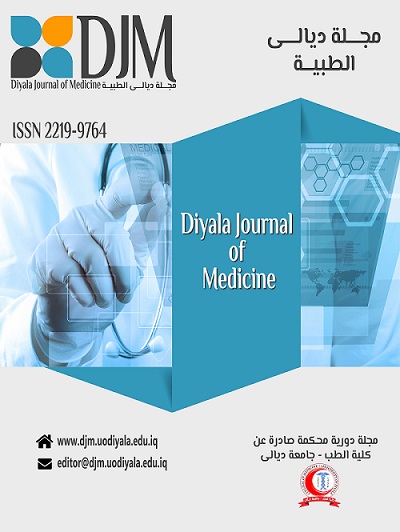Abstract
Background: Metastasis associated protein-1 (MTA1) has been a recently identified as a
unique gene playing important role in tumorigenesis and progression of cancer cells.
Objective:To evaluate MTA1 expression and its predictive value in determining histologic
grade of salivary mucoepidermoid carcinoma (MEC).
Patients and Methods: MTA1 expression was evaluated by immunohistochemistry in
paraffin-embedded tumor specimens blocks from 22 patients. Assessment of MTA1
immunostaining was achieved by counting the proportion of positively-stained tumor cells in
5 high power microscopic fields; and staining was analyzed in relation to clinicopathological
variables.
Results: MTA1 show nuclear and cytoplasmic expression in varying intensity in 95% of cases.
No significant correlation was found between MTA1expression and age, gender, site of the
tumor (p>0.05). However, statistically significant correlation was found between
MTA1expression and clinical stage, nodal involvement (p=0.009 and 0.007; respectively).
Regarding histologic grade, high MTA1 level was significantly associated with grade of tumors
categorized by Auclair and Brandwein systems (<0.001 and 0.009; respectively).
Conclusion:MTA1 expression significantly correlates with tumor grade and progression, and
has a potential role in diagnosis and prediction of behavior in salivary MEC.
unique gene playing important role in tumorigenesis and progression of cancer cells.
Objective:To evaluate MTA1 expression and its predictive value in determining histologic
grade of salivary mucoepidermoid carcinoma (MEC).
Patients and Methods: MTA1 expression was evaluated by immunohistochemistry in
paraffin-embedded tumor specimens blocks from 22 patients. Assessment of MTA1
immunostaining was achieved by counting the proportion of positively-stained tumor cells in
5 high power microscopic fields; and staining was analyzed in relation to clinicopathological
variables.
Results: MTA1 show nuclear and cytoplasmic expression in varying intensity in 95% of cases.
No significant correlation was found between MTA1expression and age, gender, site of the
tumor (p>0.05). However, statistically significant correlation was found between
MTA1expression and clinical stage, nodal involvement (p=0.009 and 0.007; respectively).
Regarding histologic grade, high MTA1 level was significantly associated with grade of tumors
categorized by Auclair and Brandwein systems (<0.001 and 0.009; respectively).
Conclusion:MTA1 expression significantly correlates with tumor grade and progression, and
has a potential role in diagnosis and prediction of behavior in salivary MEC.
